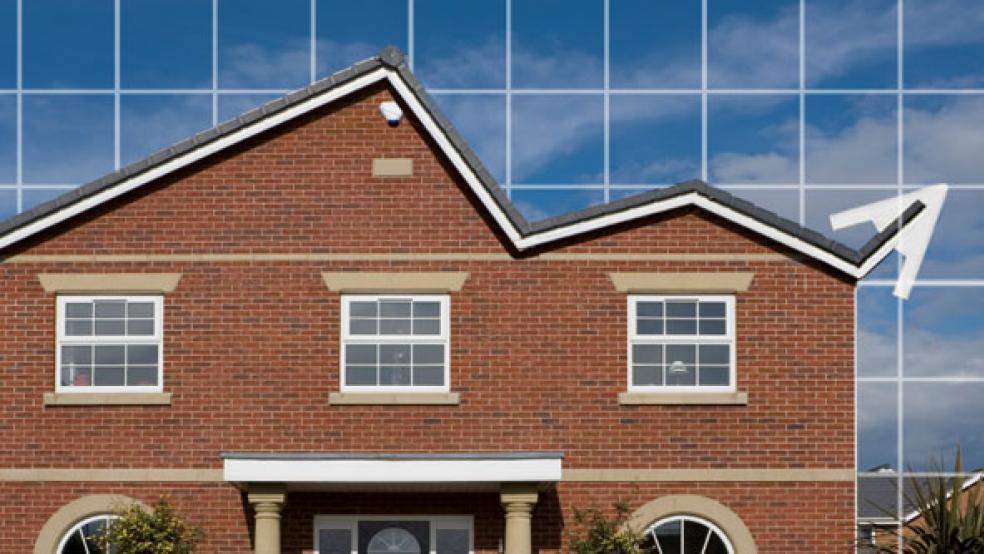After years of unending gloom, a few faint glimmers of hope have emerged in the housing industry this fall. The rental market has surged to a three-year high. While homebuilder sentiment is still low and mortgage delinquency rates remain high, both have started moving in the right direction. On top of all that, while housing starts slipped 0.3 percent in October, building permits – a proxy for future construction – rose nearly 11 percent last month to a seasonally adjusted rate of 653,000 units, according to Census Bureau data released Thursday.
That was the highest level of new permits in 19 months, and well above analysts’ expectations. The increase was spurred by a 30 percent increase in apartment permits, to 202,000, its highest level in three years. Over the past year, apartment permits have surged roughly 63 percent. Single-family permits, while they remain on pace to set a record low in 2011, climbed to their highest level in 10 months in October. “This was a good report,” IHS Global Insight economist Patrick Newport wrote in a note to clients Thursday. “It has supporting evidence that the single-family market is finally getting off the mat and that the multi-family segment is continuing to make small strides, and that we should expect good housing starts numbers the rest of this year.”
Separately, the National Association of Homebuilders reported yesterday that builder sentiment, though still at extremely depressed levels, was improving and rose three points to 20 in November, the highest level since May 2010. Readings below 50 indicate conditions are poor, so a rise to 20 is no reason for great joy. But it at least represents a solid gain for the second straight month. "While we still have a long way to go toward a recovery, some signs of hope are emerging in certain markets where economic and job growth is occurring and where foreclosures have not been an overwhelming obstacle," said Bob Nielsen, chairman of the NAHB. The NAHB says that while housing production and permits have been slow rising, a more solid recovery will begin to take hold in 2012.
The newly released data build on a couple of other pockets of strength in the housing industry. The rental market has emerged as one bright spot as poor economic conditions and stringent mortgage financing requirements have made it more difficult to become a homeowner – and made consumers less likely to take on a long-term financial commitment. Multifamily rental vacancies fell to a five-year low in the third quarter, prompting landlords to increase rents, according to data released last month by property-research company Reis.
Another positive sign for the industry was the decline in the share of households behind on their mortgage, which reached its lowest level recorded since the fourth quarter of 2008, according to the Mortgage Bankers Association. The third quarter seasonally adjusted rate of 8 percent is a decrease of 0.4 percent from the second quarter of 2011, which takes the number of delinquent borrowers who have missed at least one payment to 4.2 million.
Of course, that delinquency rate is still high, and the housing market overall is far from healthy. “The risks of a recession have retreated in the last month, but uncertainty still prevails in the minds of homebuyers and homebuilders, which will keep momentum from gaining much strength this year and early next year,” says Celia Chen, an economist with Moody’s Analytics.
The foreclosure crisis will still cast a cloud over the housing market and the wider economy for a few years yet, says Paul Dales, economist with Capital Economics. Or maybe more than a few years. The Center for Responsible Lending reviewed 27 million mortgages issued over a five-year period and found “the nation is not even half way through the foreclosures crisis.” Among mortgages made between 2004 and 2008, 6.4 percent ended in foreclosure, and an additional 8.3 percent are at immediate, serious risk, a new report said. The foreclosure rates are consistently worse for borrowers who received high-risk loan products that were aggressively marketed before the housing crash.
The large number of homes that have yet to reach the market will be a further drag on home prices. In a new report, Chris Flanagan, head of U.S. Mortgages and Other Structured Finance Research at Bank of America, forecasts home prices will drop 8 percent more through the first quarter of 2013. Based on the forecast, this would translate into a cumulative 38 percent decline in home prices from their peak in 2006.
It won’t be until 2014 and 2015 that we see solid gains in home price, Flanagan noted, with an added measure of optimism: “Once the foreclosure overhang is cleared,” he wrote, “the housing market is primed for a rebound, the strength of which will likely take many by surprise.”





